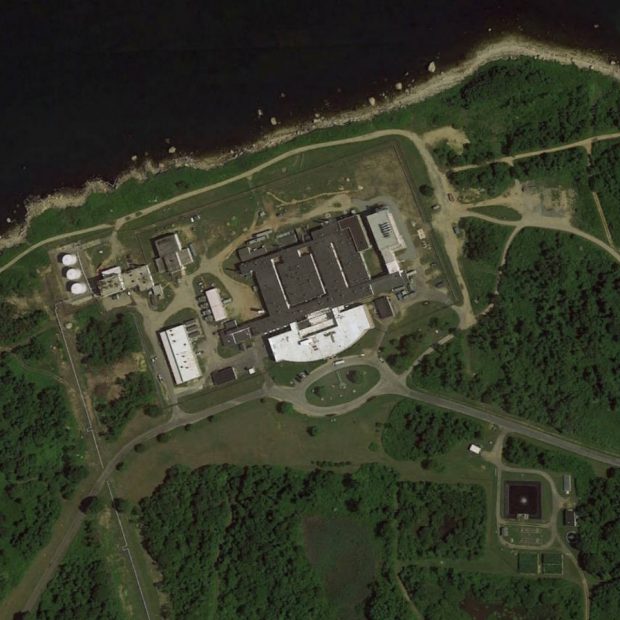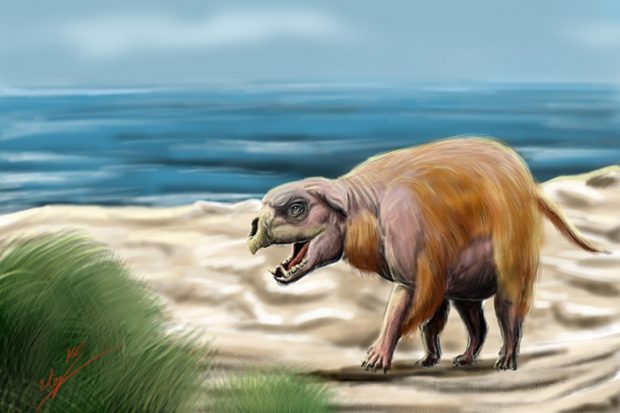
Plum Island is close to Long Island, where the wealthy and beautiful New Yorkers in the Hamptons love to vacation. But access to the island, which is only seven square kilometers in size, is strictly regulated: only those who are authorized can get up here. If mammals accidentally get lost in Plum Island, they will be shot immediately.
On July 12, 2008, a creature appeared on a beach near Montauk in the US state of New York that had never been seen before: the size of a dog, but almost hairless, pointed teeth and a kind of beak, the plump body in parts brown, in parts pink. Four friends had discovered the creepy creature that washed up dead on the shore while walking on the beach on Long Island. Shortly thereafter, the US newspaper “The Independent” published a photo of the mysterious carcass – and the world began to wonder what the sea had just spat out.
READ: Amityville Horror: The Gruesome Story of the World’s Most Famous Haunted House
The “Montauk Monster”, as the creature was quickly christened, was a turtle without a shell, some suspected. A sick coyote or a dog that had lain in the sea for a long time said the others. And another speculation quickly made the rounds: it might have been some mutated being that had formed during experiments on Plum Island and then escaped from there. Ultimately, no one could prove this theory. But people’s suspicions about what was going on on the small island 2.5 kilometers off Long Island were not necessarily allayed by the find – on the contrary.
The fear of the people stems from the fact that there is a high-security center for research into animal diseases and diseases on the island. The Plum Island Animal Disease Center (PIADC) was founded back in 1954 to study foot-and-mouth disease in particular. The highly contagious viral disease mainly affects cattle and pigs. Once it has broken out, the disease spreads rapidly and the affected livestock is no longer suitable for human consumption. In the United States, where a particularly high amount of meat is consumed, the aim of establishing the research center was to prevent foot-and-mouth disease and other diseases from becoming a threat to economic stability.
Rinderpest is also being researched at the PIADC and the findings of the scientists were able to bring it to a standstill worldwide. “The laboratory stores the only rinderpest pathogens in all of North America,” the spokesman continues, adding: “As you can imagine, the island is strictly secured so that the risk of this or other dangerous diseases are accidentally or deliberately released.”

The research facilities on Plum Island are operated under the strictest safety precautions
That is why the Plum Island Animal Disease Center works under biological protection level 3. This means that only trained personnel in special protective clothing have access to the research laboratories and that this access takes place under the strictest safety precautions. Among other things, there is negative pressure in the laboratories so that nothing can get from the inside to the outside. Employees have to enter and exit through a lock and are completely decontaminated at the end of the working day using a special shower. Even glasses are processed with a special solution before they are allowed to leave the laboratory.
READ: Hart Island: Probably the Saddest Place in New York
“Some employees had to shower a dozen or more times in a single day, depending on where they worked,” says John S. Verrico of the U.S. Department of Homeland Security. “We also have armed guards around the clock who are specially trained to protect the facility and our employees.” How highly sensitive and dangerous the activities on Plum Island are, is also shown by the fact that, according to the FBI, the island is on an A list of possible targets that an alleged al-Qaida terrorist was carrying when she was arrested in Afghanistan in 2008 was listed.
The island itself functions largely self-sufficient from the mainland, has its own power plant and its own sewage system. If wild mammals get lost on Plum Island, they will be shot. The reason: the risk is too big. There have been at least three incidents in the past.
Pathogens that can be transmitted from animals to humans are also stored frozen on Plum Island. After a severe hurricane in 1991 that led to a power outage, it was feared that the pathogen might have got outside. In 2000, Long Island activists prevented PIADC research from expanding into diseases that affect humans.
To this day there are still people who claim that secret, even illegal research is taking place on Plum Island. Such suspicion could never be confirmed. But when a deformed carcass like that of Montauk suddenly appears near the island, it is not surprising that many people immediately associate such a find with the Animal Disease Center. The spokesman for the U.S. Department of Homeland Security assures: “There is not a bit of truth in the Montauk Monster story, and there is certainly no connection to Plum Island. The research center does not conduct any experiments with animal mutations.”
READ: Dubai Insider Tips: The Best Info for Tourists
There is only a single photo of the strange creature and the carcass disappeared without a trace immediately after it was found. A researcher never had the opportunity to examine the creature comprehensively. In the same year of the find, the “History Channel” came to Plum Island for its TV series “Monster Quest” to investigate the mystery.

Montauk monster art
But people’s suspicions remained. Especially because after this first find in 2008 other strange-looking creatures appeared in New York. Just a year later, Fox News reported a “new Montauk monster” that had washed ashore on Long Island.
Then, in March 2011, a student found a bloated corpse on Northville Beach, Long Island. The student told the US newspaper Riverhead News-Review at the time: “The being I found seems to resemble the Montauk monster in many ways.” And in July 2012 another similar-looking creature appeared under the Brooklyn Bridge, the was named “East River Monster”. Although the latter was clearly identified as a pig carcass, it was again associated with Plum Island and the “Montauk Monster”.
Conspiracy theorists will probably always find something to feed the mysterious rumors about the small island in the Atlantic. However, the fact is only one thing: What happens on Plum Island is definitely dangerous. However, as long as the safety measures are as high as they are today, no pathogens should penetrate the outside world. And even if there is, the sea is still between the island and the mainland.
Originally, the U.S. Department of Homeland Security plans to relocate the Animal Disease Research Center to Kansas in the middle of the American continent. The new laboratory, which has of course been completely modernized, should go into operation by 2024 at the latest. But the plans were rejected again due to safety concerns because pathogens could get outside much more easily on the mainland than on an island.
Then what happens to Plum Island? Initially, it was planned to sell the island to the highest bidder. However, a coalition of congressmen from Connecticut and New York recently successfully prevented this, at least temporarily, as reported by the US newspaper “Connecticut Mirror”, among others. The reason: Various bird species have settled on the island, including some rare and endangered species.
Like us on Facebook for more stories like this: